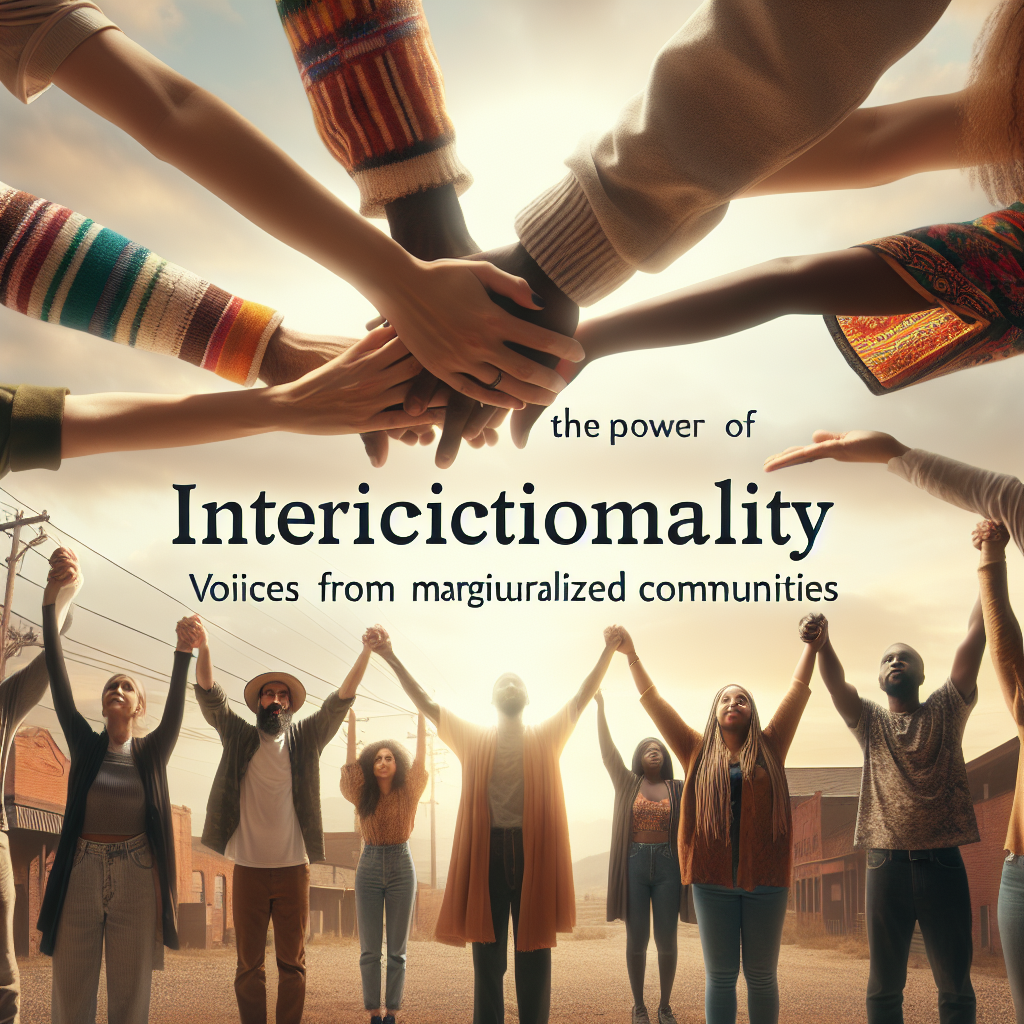Introduction
In today’s diverse society, understanding the nuances of identity is crucial, especially when confronting systemic inequalities. Intersectionality—a term coined by scholar Kimberlé Crenshaw—provides a framework to comprehend how various social identities (like race, gender, sexuality, and class) intersect and influence one another. The Power of Intersectionality: Voices from Marginalized Communities not only broadens our perspective but also amplifies the voices that are often overlooked or silenced. This article dives deep into the significance of intersectionality, bringing to life real stories from marginalized communities and illustrating how these intersections profoundly shape experiences and outcomes in society.
Understanding Intersectionality
What is Intersectionality?
Intersectionality is an analytical framework that seeks to understand how overlapping social identities relate to systemic discrimination and oppression. The Power of Intersectionality: Voices from Marginalized Communities underscores that no individual exists in a vacuum; we each inhabit multiple identities that inform our experiences. For example, a Black woman may face both racial and gender discrimination in ways that are uniquely different from those experienced by a white woman or a Black man.
The Importance of Recognizing Intersectionality
Recognizing the multiple facets of identity is essential in advocating for equity. According to research by the National Women’s Law Center, policies that ignore intersectionality fail to address the very real experiences of those affected by multiple forms of discrimination. By engaging with The Power of Intersectionality: Voices from Marginalized Communities, policy-makers and advocates can create more inclusive solutions.
Case Studies That Illustrate Intersectionality
Case Study 1: The Struggles of Trans Women of Color
Trans women of color represent one of the most marginalized groups within both the LGBTQ+ community and broader society. According to a report by the Human Rights Campaign in 2020, nearly 91% of fatal violence against the transgender community involved trans women of color.
Analysis
The tragic outcomes faced by these women are a stark reminder of how interconnected issues of race, gender, and sexuality manifest in violence and discrimination. Addressing these injustices requires acknowledging and amplifying the voices of trans women of color in policy discussions, particularly in the realms of healthcare, legal protections, and community support.
Case Study 2: The Reality of Immigrant Women
Immigrant women often face a unique intersection of challenges that include both gender and immigration status. A report from the Institute for Women’s Policy Research found that immigrant women are overrepresented in low-wage jobs and often lack access to essential services.
Analysis
These challenges highlight the intersection of gender and economic status, as immigrant women must navigate not only workplace discrimination but also barriers related to their legal status. The Power of Intersectionality: Voices from Marginalized Communities brings attention to the need for policies that consider both gender and immigration in order to uplift and empower these women.
The Impact of Intersectionality on Advocacy
Intersectionality in Activism
Engaging with The Power of Intersectionality: Voices from Marginalized Communities allows activists to formulate more effective strategies. For instance, movements like Black Lives Matter have highlighted how police violence disproportionately affects Black individuals but can vary dramatically based on gender, sexual orientation, and socio-economic status.
Collaborative Efforts
Organizations dedicated to civil rights, like the American Civil Liberties Union (ACLU), often employ an intersectional lens to address issues. By recognizing that individuals face multiple forms of discrimination, they craft campaigns that include diverse voices, ensuring that solutions are holistic.
Tables and Charts to Illustrate Key Points
| Social Identity | Challenges Faced | Intersectional Implications |
|---|---|---|
| Black Women | Wage gap, healthcare access | Unique experiences of racism and sexism |
| Trans Women of Color | Violence, legal challenges | Overlapping discrimination |
| Immigrant Women | Economic disparities, legal vulnerabilities | Dual barriers of gender and status |
Figure 1: The Overlap of Marginalized Identities
This chart shows the varying degrees of challenges faced by different intersecting identities.
Conclusion
The Power of Intersectionality: Voices from Marginalized Communities is not merely an academic concept; it is essential for understanding the complex realities of our society. By recognizing and amplifying the voices that often go unheard, we can foster an environment of inclusivity and equity. To truly advocate for change, we must embrace intersectionality in our discussions, policies, and everyday interactions.
Motivational Takeaway
As we navigate the complexities of our identities, let us commit to listening, learning, and acting in solidarity with marginalized communities. Each voice matters, and together, we can create a better future that celebrates diversity and promotes justice.
FAQs About Intersectionality
1. What does intersectionality mean?
Intersectionality refers to the interconnected nature of social categorizations and how they create overlapping systems of discrimination or disadvantage.
2. Why is intersectionality important in advocacy?
It allows for a more nuanced understanding of issues faced by individuals who hold multiple marginalized identities, ensuring that solutions are comprehensive.
3. Can intersectionality be applied in policy-making?
Yes, an intersectional approach in policy-making can lead to more effective and inclusive solutions by considering various social identities and their impacts.
4. How can I amplify marginalized voices in my community?
Engage in dialogues, support local organizations, and uplift the stories and needs of marginalized individuals in decision-making forums.
5. Where can I learn more about intersectionality?
Numerous books, articles, and online courses delve into intersectionality. Notable texts include the work of Kimberlé Crenshaw and bell hooks.
By embracing The Power of Intersectionality: Voices from Marginalized Communities, we not only understand the unique struggles of diverse groups but also become advocates for genuine change, fostering a society where every voice is heard and valued.

